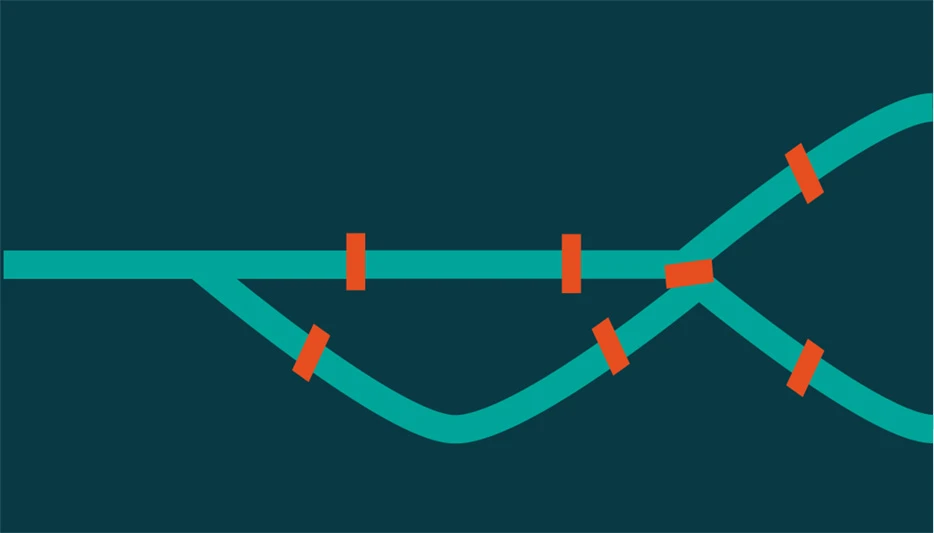
Photo courtesy of Rubicon
1. What is high-density routing?

RUBICON
Vice President of
Smart Cities
High-density routing is a type of vehicle routing puzzle with the goal of visiting every street (or a large subset of streets) in a network in the most efficient manner possible. This type of routing has a variety of applications, such as in waste and recycling collection, street sweeping and snow plowing. It differs from point-to-point routing, which identifies the shortest path between a limited set of points, usually spread over a wide area, in that it focuses on finding the most cost-effective route that serves all locations in a dense area, such as a city. Algorithms are used to optimize the routes and minimize the total cost of service.
2. Why is high-density routing challenging for public works departments?
High-density routing poses a challenge for public works departments because of the mathematical complexity of sending vehicles to every street in a city. Solid waste collection vehicles could take billions of possible paths to collect waste and recycling in a typical city. Without the right software, it is impossible to accurately create the best route.
3. Is it possible to solve the puzzle of high-density routing?
No magic bullet will instantly solve the challenges of high-density routing for heavy-duty fleets; but, when the problem is approached in a methodical way using accurate data, fine tuning and the right software, municipalities and hauling companies can implement significantly optimized routes.
4. How can software, or technology more generally, help with high-density routing?

High-density routing software can be used to create an initial set of optimized or near-optimized routes for each day and service, where the routes are balanced within a certain tolerance and the travel paths have eliminated most of the unnecessary deadheading or traveling. More specifically, it can be used to optimize routes based on vehicle capacities, uncover optimal tipping locations, set preferred turn directions, prioritize downhill service for fuel efficiency and safety, require early service for priority streets, optimize loader numbers and add time for obstacle-filled streets. Route optimization is not a one-size-fits-all solution. The process requires work and attention to input data, constraints and the manual validation and fine-tuning of computer-generated routes to meet each organization’s own criteria for success. Route optimization is not magic, but a sophisticated and flexible software tool can help you evaluate many potential ways of delivering your services with a view toward solving the “impossible problem.”
5. How often do high-density routes need to be changed on average?
The beauty of Rubicon’s high-density routing software for government and private fleets is it can update routes easily based on new conditions. For example, when new customers or housing areas are introduced, their locations can be entered into the software, which reevaluates and optimizes routes based on the new data, and those routes are automatically delivered to the crews. Likewise, when drivers note obstacles in the field, such as closed streets, low-hanging electrical wires and other impediments, this information can be used to fine-tune the routes and paths. This continuous loop of feedback and route optimization leads to ever-improving service, safer routes for the crew and public and increased savings for the city.

Explore the April 2023 Issue
Check out more from this issue and find your next story to read.
Latest from Waste Today
- Mount Vernon, Ohio, city council tightens waste hauling regulations
- Retail associations sign MOU to form producer responsibility organization for textiles in California
- Republic Services partners with EDL to provide RNG for San Antonio buses
- WM opens 12 recycling facilities in 2024
- Plastics recyclers report difficult conditions
- BTS Bioenergy opens Maryland Organics Recovery Center
- Meadow tabs aluminum as key to boosting beauty sector recycling
- LFG-to-energy: Maximizing returns with multitiered methane monitoring





